Abstract
Studies were designed to investigate whether the suppressor cell systems that regulate the humoral and cell-mediated immune responses belong to the same subsets of T cells or different subsets. Mitogen-activated suppressor cells were simultaneously assayed for their ability to inhibit (a) pokeweed mitogen-induced generation of plasma cells, (b) blastogenic response of lymphocytes to allogeneic cells, and (c) generation of killer cells in the cell-mediated lymphocytotoxicity assay. We found that suppressor cells that inhibited the generation of plasma cells were activated by concanavalin A (Con A) and were both radiation and prednisone sensitive. Suppressors that inhibited the blastogenic response in lymphocytes to allogenic cells were also activated by Con A but differed in that they were both radiation and prednisone resistant. In contrast, suppressors that inhibited the generation of the killer cells were activated with phytohemagglutinin and not Con A. These suppressors were prednisone and radiation resistant. These observations cannot be explained by differences at the pro-suppressor or suppressor activator levels as both T cell subsets are radiosensitive. Alternatively, heterogeneity of suppressor cell systems may explain these differences.
Full text
PDF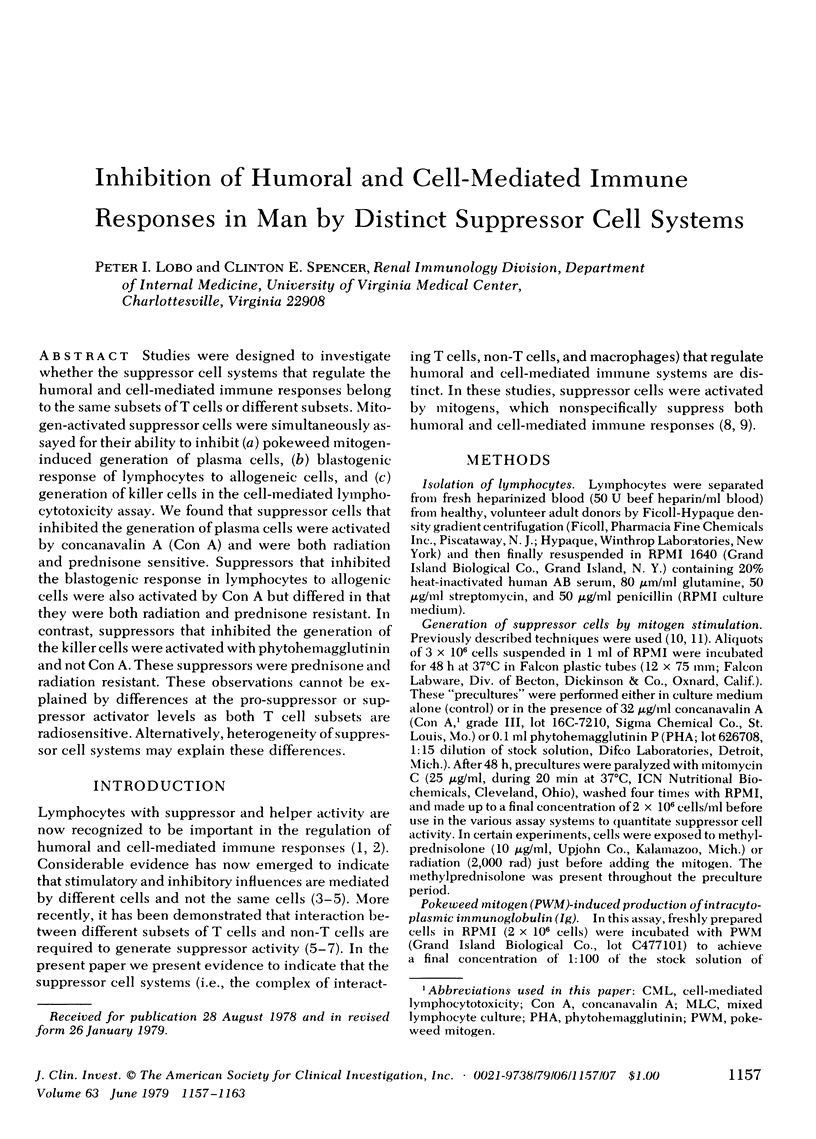
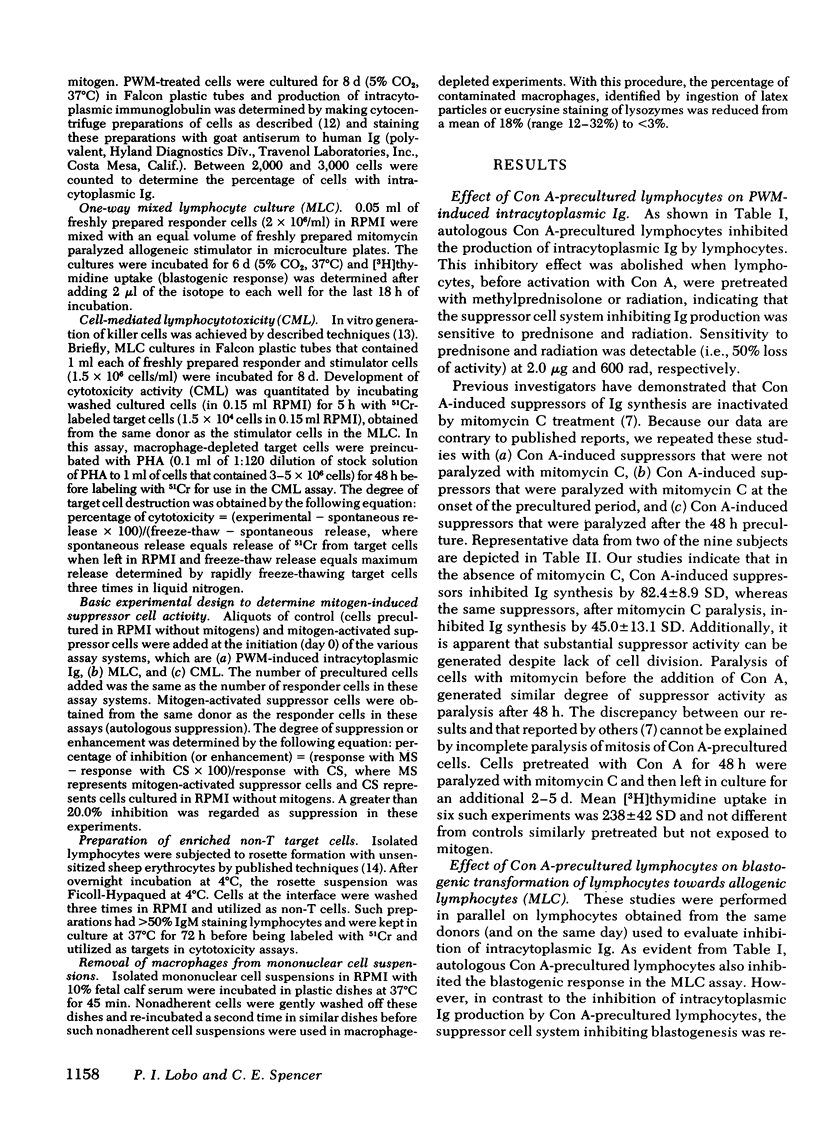

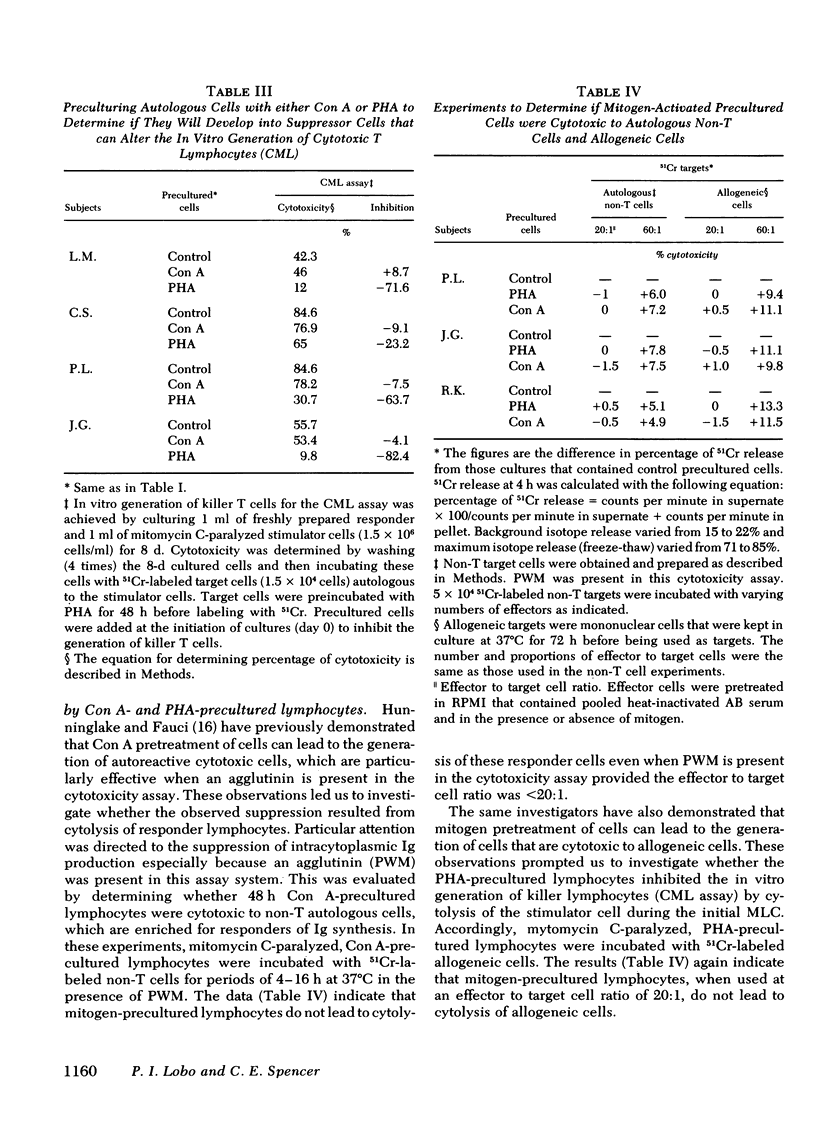
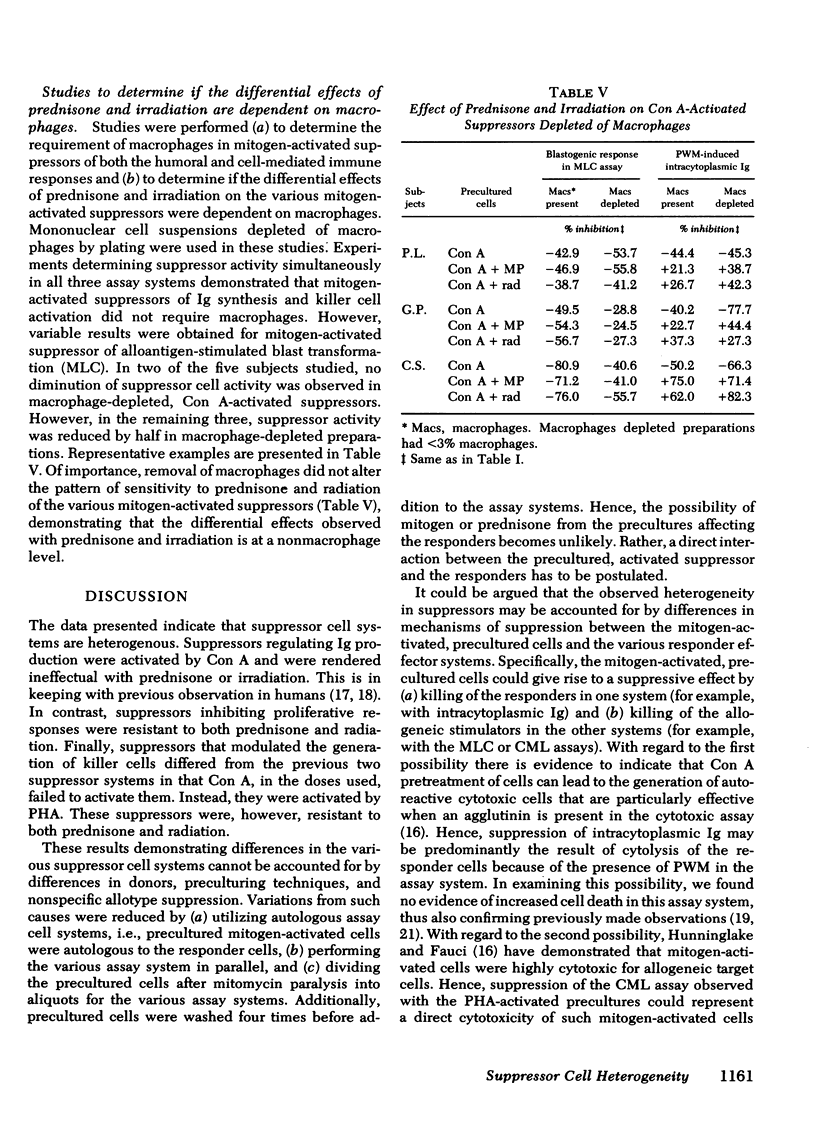
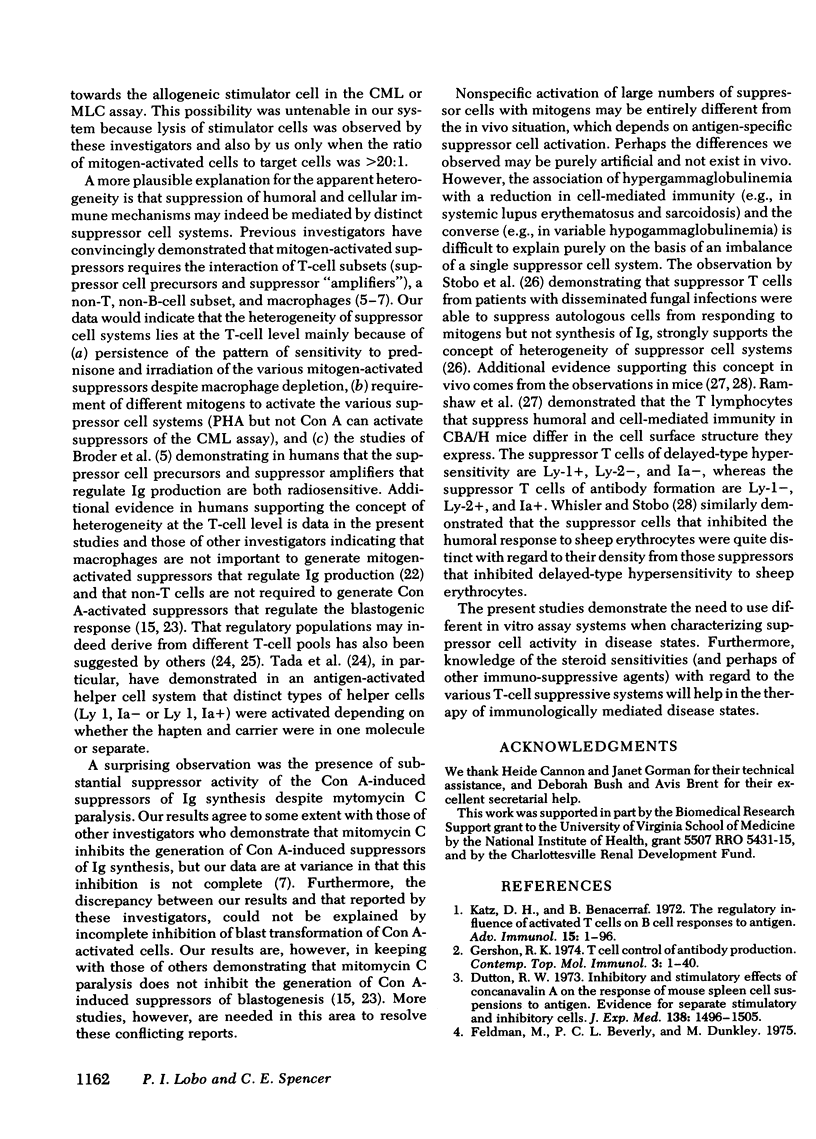
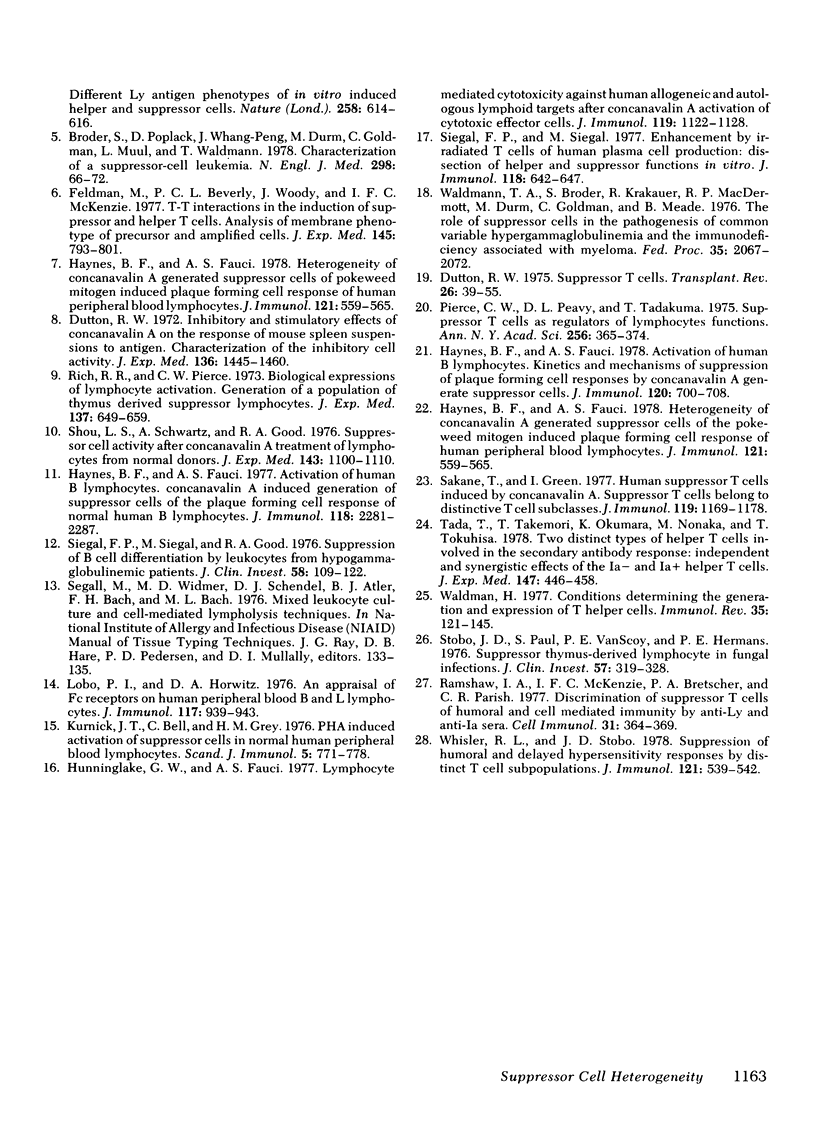
Selected References
These references are in PubMed. This may not be the complete list of references from this article.
- Broder S., Poplack D., Whang-Peng J., Durm M., Goldman C., Muul L., Waldmann T. A. Characterization of a suppressor-cell leukemia. Evidence for the requirement of an interaction of two T cells in the development of human suppressor effector cells. N Engl J Med. 1978 Jan 12;298(2):66–72. doi: 10.1056/NEJM197801122980202. [DOI] [PubMed] [Google Scholar]
- Dutton R. W. Inhibitory and stimulatory effects of concanavalin A on the response of mouse spleen cell suspensions to antigen. I. Characterization of the inhibitory cell activity. J Exp Med. 1972 Dec 1;136(6):1445–1460. doi: 10.1084/jem.136.6.1445. [DOI] [PMC free article] [PubMed] [Google Scholar]
- Dutton R. W. Inhibitory and stimulatory effects of concanavalin A on the response of mouse spleen cell suspensions to antigen. II. Evidence for separate stimulatory and inhibitory cells. J Exp Med. 1973 Dec 1;138(6):1496–1505. doi: 10.1084/jem.138.6.1496. [DOI] [PMC free article] [PubMed] [Google Scholar]
- Dutton R. W. Suppressor T cells. Transplant Rev. 1975;26:39–55. doi: 10.1111/j.1600-065x.1975.tb00174.x. [DOI] [PubMed] [Google Scholar]
- Feldmann M., Beverley P. C., Woody J., McKenzie I. F. T-T interactions in the induction of suppressor and helper T cells: analysis of membrane phenotype of precursor and amplifier cells. J Exp Med. 1977 Apr 1;145(4):793–801. doi: 10.1084/jem.145.4.793. [DOI] [PMC free article] [PubMed] [Google Scholar]
- Gershon R. K. T cell control of antibody production. Contemp Top Immunobiol. 1974;3:1–40. doi: 10.1007/978-1-4684-3045-5_1. [DOI] [PubMed] [Google Scholar]
- Haynes B. F., Fauci A. S. Activation of human B lymphocytes. III. Concanavalin A-induced generation of suppressor cells of the plaque-forming cell response of normal human B lymphocytes. J Immunol. 1977 Jun;118(6):2281–2287. [PubMed] [Google Scholar]
- Haynes B. F., Fauci A. S. Activation of human B lymphocytes. V. Kinetics and mechanisms of suppression of plaque-forming cell responses by concanavalin A-generated suppressor cells. J Immunol. 1978 Mar;120(3):700–708. [PubMed] [Google Scholar]
- Haynes B. F., Fauci A. S. Activation of human B lymphocytes. X. Heterogeneity of concanavalin A-generated suppressor cells of the pokeweed mitogen-induced plaque-forming cell response of human peripheral blood lymphocytes. J Immunol. 1978 Aug;121(2):559–565. [PubMed] [Google Scholar]
- Haynes B. F., Fauci A. S. Activation of human B lymphocytes. X. Heterogeneity of concanavalin A-generated suppressor cells of the pokeweed mitogen-induced plaque-forming cell response of human peripheral blood lymphocytes. J Immunol. 1978 Aug;121(2):559–565. [PubMed] [Google Scholar]
- Hunninghake G. W., Fauci A. S. Lymphocyte-mediated cytotoxicity against human allogeneic and autologous lymphoid targets after concanavalin A-activation of cytotoxic effector cells. J Immunol. 1977 Sep;119(3):1122–1128. [PubMed] [Google Scholar]
- Katz D. H., Benacerraf B. The regulatory influence of activated T cells on B cell responses to antigen. Adv Immunol. 1972;15:1–94. doi: 10.1016/s0065-2776(08)60683-5. [DOI] [PubMed] [Google Scholar]
- Kurnick J. T., Bell C., Grey H. M. PHA-induced activation of suppressor cells in normal human peripheral blood lymphocytes. Scand J Immunol. 1976;5(6-7):771–778. doi: 10.1111/j.1365-3083.1976.tb03026.x. [DOI] [PubMed] [Google Scholar]
- Lobo P. I., Horwitz D. A. An appraisal of Fc receptors on human peripheral blood B and L lymphocytes. J Immunol. 1976 Sep;117(3):939–943. [PubMed] [Google Scholar]
- Pierce C. W., Peavy D. L., Tadakuma T. Suppressor T cells as regulators of lymphocyte functions. Ann N Y Acad Sci. 1975 Jun 13;256:365–374. doi: 10.1111/j.1749-6632.1975.tb36063.x. [DOI] [PubMed] [Google Scholar]
- Ramshaw I. A., McKenzie I. F., Bretscher P. A., Parish C. R. Discrimination of suppressor T cells of humoral and cell-mediated immunity by anti-Ly and anti-Ia sera. Cell Immunol. 1977 Jun 15;31(2):364–369. doi: 10.1016/0008-8749(77)90038-7. [DOI] [PubMed] [Google Scholar]
- Rich R. R., Pierce C. W. Biological expressions of lymphocyte activation. II. Generation of a population of thymus-derived suppressor lymphocytes. J Exp Med. 1973 Mar 1;137(3):649–659. doi: 10.1084/jem.137.3.649. [DOI] [PMC free article] [PubMed] [Google Scholar]
- Sakane T., Green I. Human suppressor T cells induced by concanavalin A: suppressor T cells belong to distinctive T cell subclasses. J Immunol. 1977 Sep;119(3):1169–1178. [PubMed] [Google Scholar]
- Shou L., Schwartz S. A., Good R. A. Suppressor cell activity after concanavalin A treatment of lymphocytes from normal donors. J Exp Med. 1976 May 1;143(5):1100–1110. doi: 10.1084/jem.143.5.1100. [DOI] [PMC free article] [PubMed] [Google Scholar]
- Siegal F. P., Siegal M. Enhancement by irradiated T cells of human plasma cell production: dissection of helper and suppressor functions in vitro. J Immunol. 1977 Feb;118(2):642–647. [PubMed] [Google Scholar]
- Siegal F. P., Siegal M., Good R. A. Suppression of B-cell differentiation by leukocytes from hypogammaglobulinemic patients. J Clin Invest. 1976 Jul;58(1):109–122. doi: 10.1172/JCI108439. [DOI] [PMC free article] [PubMed] [Google Scholar]
- Stobo J. D., Paul S., Van Scoy R. E., Hermans P. E. Suppressor thymus-derived lymphocytes in fungal infection. J Clin Invest. 1976 Feb;57(2):319–328. doi: 10.1172/JCI108283. [DOI] [PMC free article] [PubMed] [Google Scholar]
- Tada T., Takemori T., Okumura K., Nonaka M., Tokuhisa T. Two distinct types of helper T cells involved in the secondary antibody response: independent and synergistic effects of Ia- and Ia+ helper T cells. J Exp Med. 1978 Feb 1;147(2):446–458. doi: 10.1084/jem.147.2.446. [DOI] [PMC free article] [PubMed] [Google Scholar]
- Waldmann H. Conditions determining the generation and expression of T helper cells. Immunol Rev. 1977;35:121–145. doi: 10.1111/j.1600-065x.1977.tb00238.x. [DOI] [PubMed] [Google Scholar]
- Waldmann T. A., Broder S., Krakauer R., MacDermott R. P., Durm M., Goldman C., Meade B. The role of suppressor cells in the pathogenesis of common variable hypogammaglobulinemia and the immunodeficiency associated with myeloma. Fed Proc. 1976 Jul;35(9):2067–2072. [PubMed] [Google Scholar]
- Whisler R. L., Stobo J. D. Suppression of humoral and delayed hypersensitivity responses by distinct T cell subpopulations. J Immunol. 1978 Aug;121(2):539–542. [PubMed] [Google Scholar]


